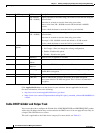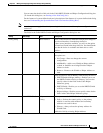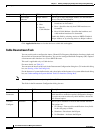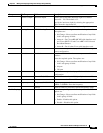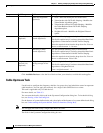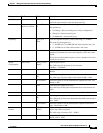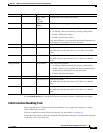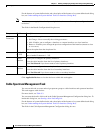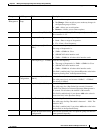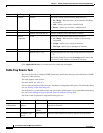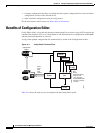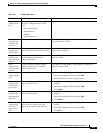
9-88
User Guide for Resource Manager Essentials 4.1
OL-11714-01
Chapter 9 Making and Deploying Configuration Changes Using NetConfig
Using System-defined Tasks
For the features of system-defined tasks and a description of the features of a system-defined task dialog
box, see
Understanding the System-defined Task User Interface (Dialog Box).
Note At a time, you can apply this task only to a single device, because cable templates configure interfaces
on devices.
The fields in the Bundle Configuration dialog box are:
Click Applicable Devices to view the devices to which this task applies.
Cable Spectrum Management Task
You can use this task to create and assign spectrum groups to cable interfaces and upstream interfaces.
This task supports cable devices.
For more details, see Table 9-3.
You can enter the details of this task in the Cable Spectrum Management Configuration dialog box. To
invoke this dialog box, see
Starting a New NetConfig Job.
For the features of system-defined tasks and a description of the features of a system-defined task dialog
box, see
Understanding the System-defined Task User Interface (Dialog Box).
The fields in the Cable Spectrum Management Configuration dialog box are:
Group Field Description
Cable
Parameters
Action Select one of these options:
• No Change—Does not modify the existing parameters.
• Add—Enables you to configure a interface as a master interface or a slave interface.
• Remove—Enables you to change the previous configuration of the interface (master to slave
or vice versa).
Choose the option from the drop down list.
Bundle ID
(1-255)
Indicates the bundle identifier.
Enter a bundle ID between 1 - 255.
Master
Interface
Allows you to configure the primary interfaces.
Select the cable interface from the list of primary interfaces.
Select Not Selected if you do not want to select a primary interface.
Slave
Interface
Allows you to configure the secondary interfaces.
Select the cable interface from the list of secondary interfaces.
Select Not Selected if you do not want to select a secondary interface.



